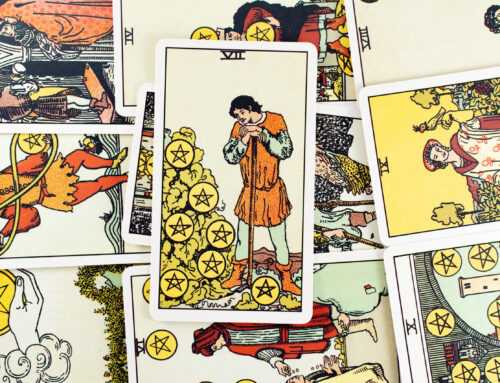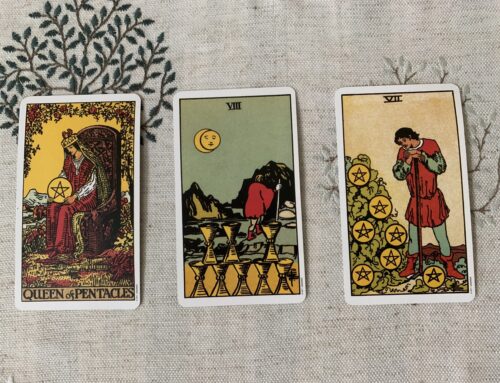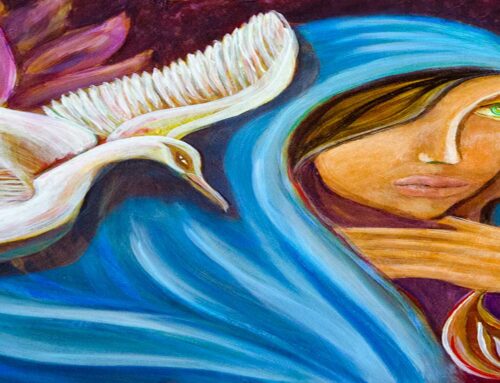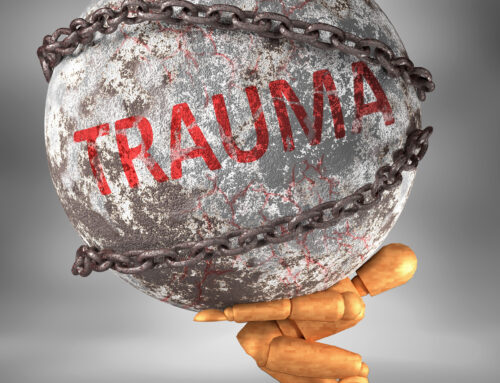Why Go on a Pilgrimage?
The number of people engaging in Pilgrimage activity is reportedly on the up. That means, there are many of you out there who already understand what the benefits can be.
For the uninitiated, however, the notion of going on a pilgrimage may not be so easily understood. You may regard it as an outmoded religious activity that is of no interest.
If you fall into this category, I encourage you to think again.
There are benefits to be had, notably to your health, that do not need religion to be felt. And they are what this article is all about.
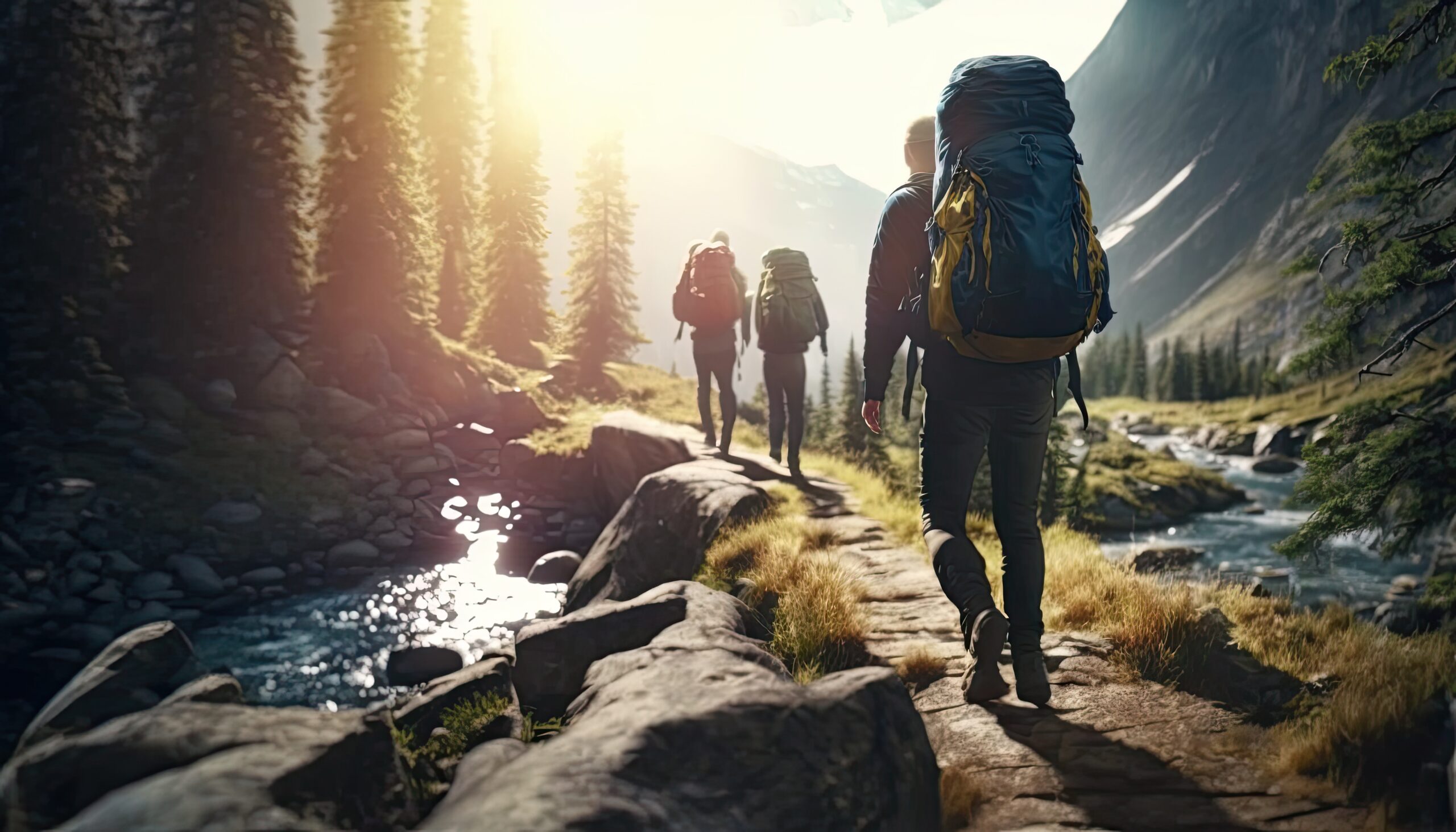
Does Pilgrimage have a place in Modern Society?
So here I am, considering this question, by looking into the art of pilgrimage, alongside the scientific evidence supporting its benefits.
I have examined pilgrimage as a place for: reflection; processing grief; connecting with your ancestors; contemplation and resolution at the end-of-life; nurturing physical ,mental, emotional and spiritual welfare; paying your respects, and last but not least, fostering our connection to nature and other humans. All these impact our sense of wellbeing.
Often life is too busy, and we do not allow the time our bodies and minds need to reflect, contemplate and unwind. We do not invest time in proper eating disciplines and exercise regimes. Health then becomes the casualty.
As the adage goes “If you don’t make time for your health, expect to make time for illness”. As bleak as that sounds, there is also truth in it.
So don’t wait until you fall ill before you start looking for solutions. Discover how pilgrimage does have a place in modern society, as an activity that supports health, wellbeing and healing.

Do you feel drawn to the idea of Pilgrimage?
Personally, I felt drawn to do it, so I guess that is as good a reason as any to pull out the walking gear and plan a route. But if that isn’t you, read on!
Processing Grief on a Pilgrimage from Porto to Santiago de Compostela
I went on my first long-distance walking pilgrimage in October 2018.
It was the first anniversary of my father’s passing. I had decided to take time out to reflect on our relationship and to process the 10-month mayhem that had followed his cancer diagnosis.
I flew to Porto in Portugal with a friend, and for a few days we took in the sites, including a one-day pilgrimage to Coimbra and Fatima.
Fatima is the sacred site where the Virgin Mary is said to have appeared to three shepherd children in 1917; a story we both knew from our Roman Catholic upbringings, and now was our opportunity to visit this place in person. It was a warm-up for the week that was about to come.
At the time I didn’t recognise it, but this call to Fatima was also an early awakening bell for what is now my currently evolving work with the divine feminine.
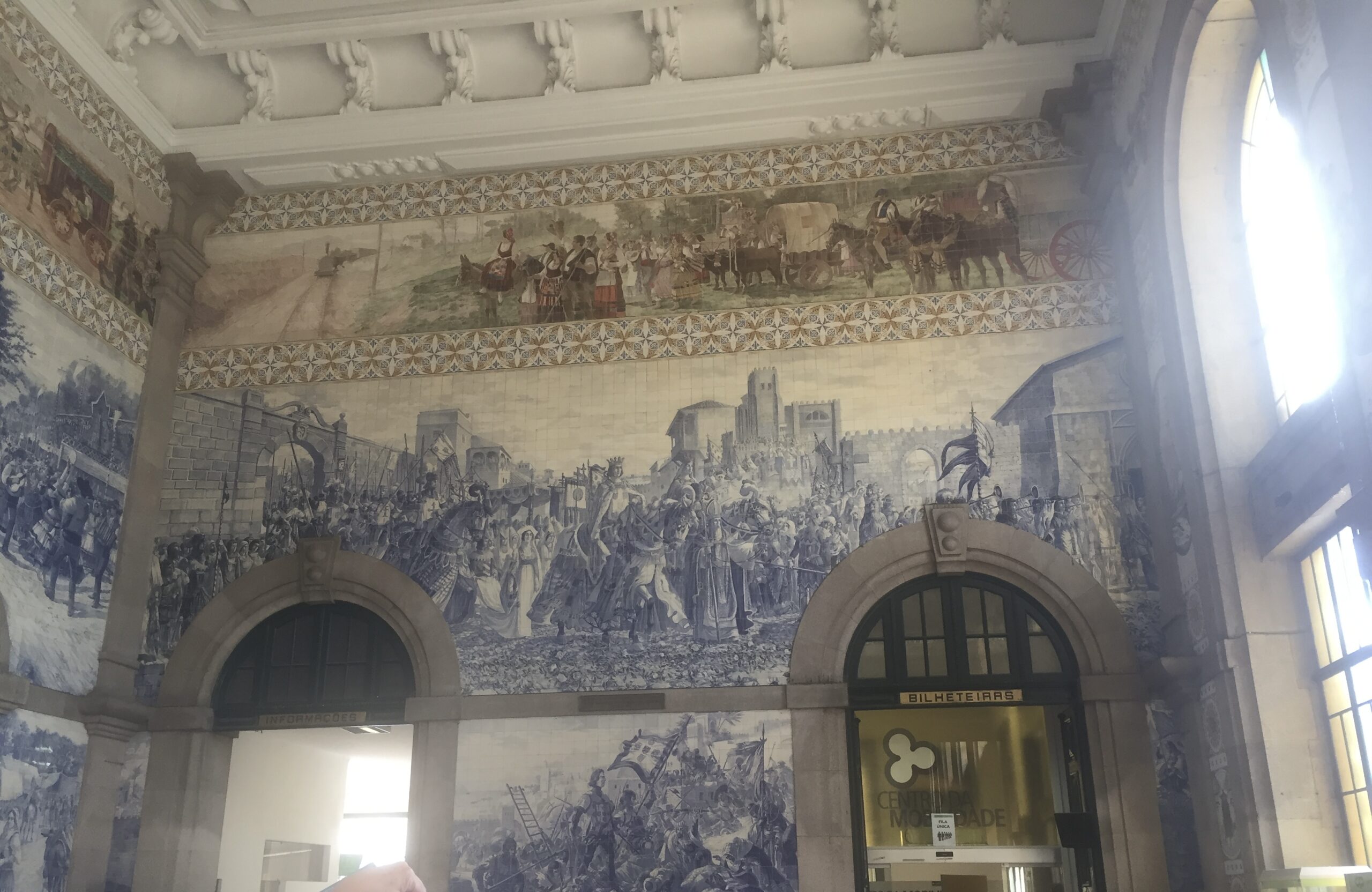
On the fourth day my friend and I said our goodbyes. She flew home, and I caught the train from Porto (what an amazing train station!) to the Spanish/Portuguese border town of Tui. Tui is the place from where I set off in earnest, walking the 128km to Santiago de Compostela.
A Pilgrimage to Reflect
My father was diagnosed with skin cancer in January 2017, and initially we were advised that there was every reason to be hopeful for a recovery. That did not come to pass.
As hope gradually and painfully disappeared, we came to accept that there was no coming back from the tumours that were ravaging his body.
We buried him on his 73rd birthday. It was 12 days since he had slipped away in the small hours of the morning with my brother asleep on the floor beside him (no night-time visitors technically allowed in the hospital). He awoke to the sound of the hospital room door opening and closing. There was no-one there, and then he knew. I got the phone call at 3am.
I had received another call, just the week before, when I was on holiday in Turkey, to tell me that he was slipping fast. Family didn’t think I would make it back in time.
I told them to tell him I was on my way. I landed late on the Friday night and was up at the crack of dawn the following morning to drive to the hospital. He did hang in, and I spent the whole of Saturday sitting by his bedside, holding his hand and wetting his parched lips. He was out of it by then, and finally ebbed away in the small hours of Wednesday morning.
Processing Grief
It was unbelievably hard to watch what he went through in that 10-month “eternity”. The short-lived up when we thought the chemo was working, followed by the complete annihilation of his immune system, the hospitalisations, the endless rounds of intra-venous antibiotics, the surgery, the radiotherapy that went wrong, until his mind and body could take no more.
There was a lot to process during that time and it didn’t stop at his death. He hadn’t left his affairs in good order, so there was all that to deal with as well.
So, on the one-year anniversary of his death I took myself off, on my own, and gave myself some space to process all that had come to pass..
The pilgrimage was the perfect vehicle for what I needed.
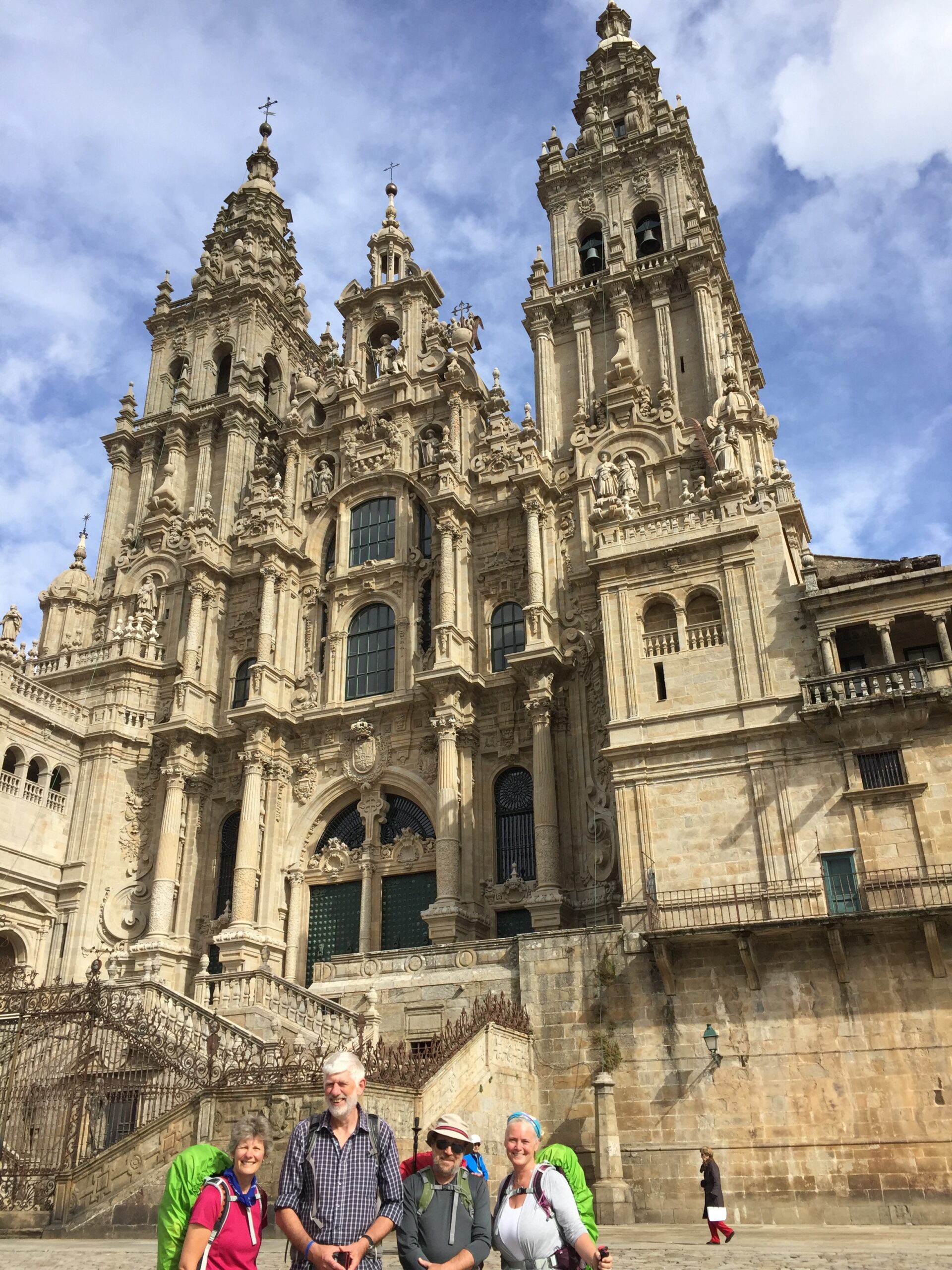
The Art and Science of Pilgrimage
Is it more of an Art to go on a Pilgrimage, or can the benefits be quantified scientifically? I find myself applying the same question to pilgrimage as is often discussed about natural healing modalities. Is there an art to healing, or is it scientifically quantified methods that are most effective? Probably, it is a bit of both.
I very much consider going on a pilgrimage as a means to supporting health.
If it involves walking, cycling, or maybe even horse riding (as opposed to driving , or catching trains from one destination to the next!) it can be physically challenging, thus benefiting physical health.
The experiences along the way can be both mentally and emotionally healing too.
There is camaraderie along the route, a sharing of stories, and of aches and pains.
There can be a transformation of the soul as challenges are pushed through and comfort zones are stretched.
Yew Tree Pilgrimage
“In July of 2021, Lucy Alderton set off on a pilgrimage to visit some of the iconic ancient yew trees of Britain”.
Cambrian Wildwood explain “Cancer treatment uses a medicine derived from yew, which prompted this journey of gratitude and discovery.”
The article explores the important relationship between our health and the health of the land. It is a story of healing through connecting with nature.
Cambrian Wildwood are a Welsh organisation aiming to restore habitats and species, and connect people with wildlife and wild places. That connection is something that many of us have lost, and we do so at our peril.
How much of illness is brought about by just how disconnected we have become from the land? When we become insular, separate and disconnected, when we feel cut off and alone, no matter the noise around us, we are setting ourselves up for illness. As human beings, we need community and we need our connection with nature.
Click here if you would like to read the article in full. It is most inspiring.
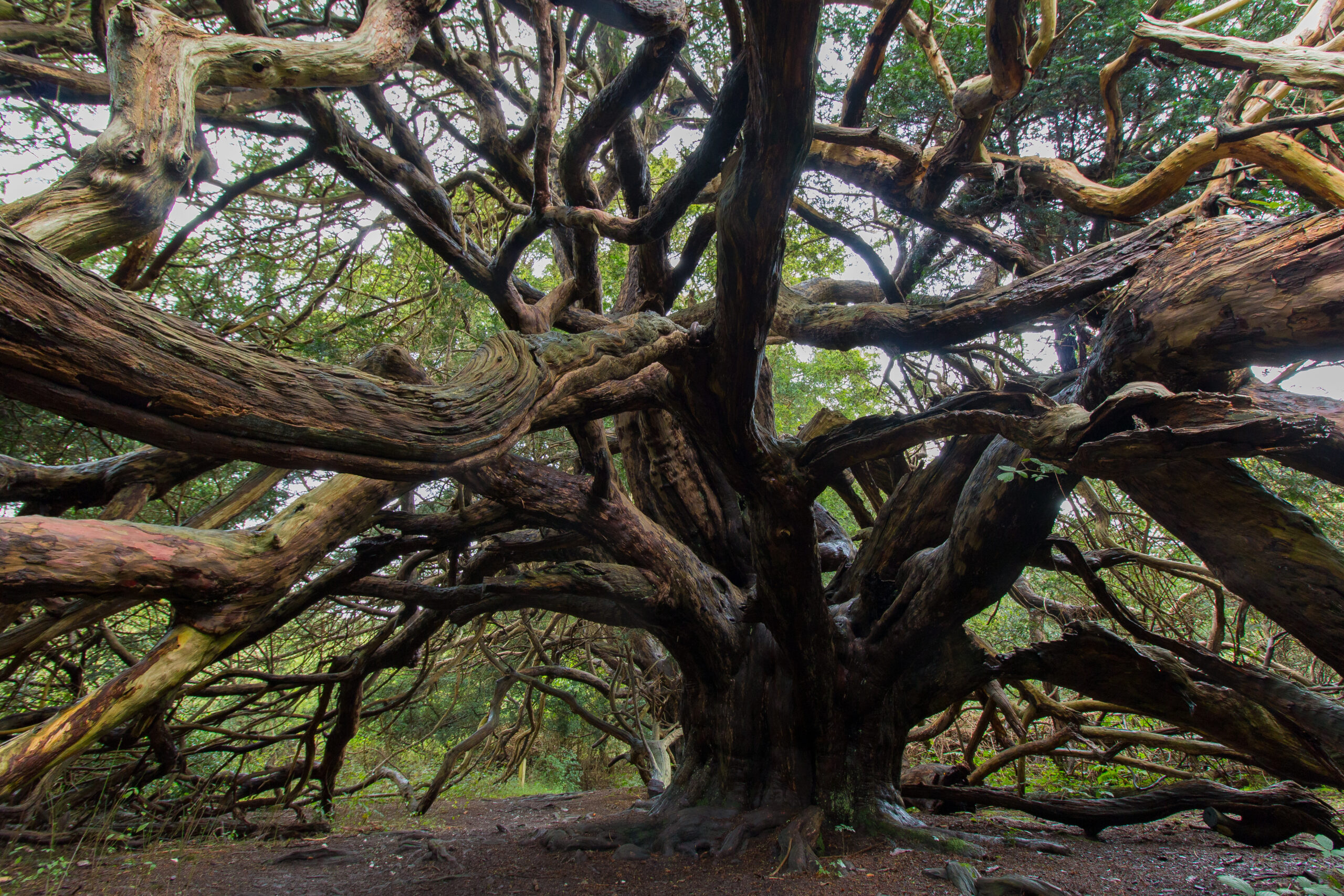
Another Tree Pilgrimage
The Daily Telegraph recently featured an article on another tree pilgrimage. Martin Hügi is a man on a mission. He aims to visit at least 2,700 of Britain’s greatest trees as listed in the Ancient Tree Inventory (ATI). He will be walking a circuitous route from Land’s End to John O’Groates to take them all in. Why is he doing this?
About Trees
Trees have such a power about them. So much so that some people like to hug them! There is no denying the grandeur and sheer presence of older specimens, and the wonderful energy to be felt when walking in woodlands.
They have the ability to heal if you can take the time to “be” with them, especially the really old ones. Notice your visceral response to them. How much calmer do you feel around them if you tune in to them?
One testament to the awesomeness of trees, and their associated fungi, can be found in Merlin Sheldrake’s book Entangled Life.
The pain killing medication Aspirin is derived from Willow bark.
And now we have a cancer treatment harvested from Yew.
There is much to be thankful for that comes from the plant kingdom and we need to look after this eco-variety so that they can continue to support us.
Science and Spiritual Practices
Rupert Sheldrake (Merlin’s Dad!) dedicates a whole chapter to pilgrimage in his book Science and Spiritual Practices (2017) .
He also examines the scientific proof behind the perceived benefits of other spiritual practices, such as meditation, gratitude journaling, connecting to the natural world and the power of singing, chanting and listening to music.
Why not combine some or all of these on a pilgrimage for some extra benefit?!
Here is some of what Rupert Sheldrake has to say:
The Benefits of Pilgrimage
“There have been few specific scientific studies of pilgrimage, but the evidence so far suggests that pilgrimages have a beneficial effect in reducing anxiety and depression. But there are countless personal stories about inspirations and healings…….”
“Most scientific studies that relate to pilgrimage are generic. Indeed, some of them merely prove the obvious. But it is reassuring to know that the obvious is also scientifically observable.”
“First, walking itself has many proven benefits. It promotes mental health and well-being, improves self-esteem, mood and quality of sleep, and reduces stress, anxiety and fatigue.”
“Fifth, healing is influenced by people’s hopes and expectations………..if pilgrimages increase people’s hopes and expectations, which they do, we might expect that visits to holy places would result in numerous healings, which they do. When supportive people surround those who hope for healing, sharing their hopes and expectations, the effects are stronger still.”
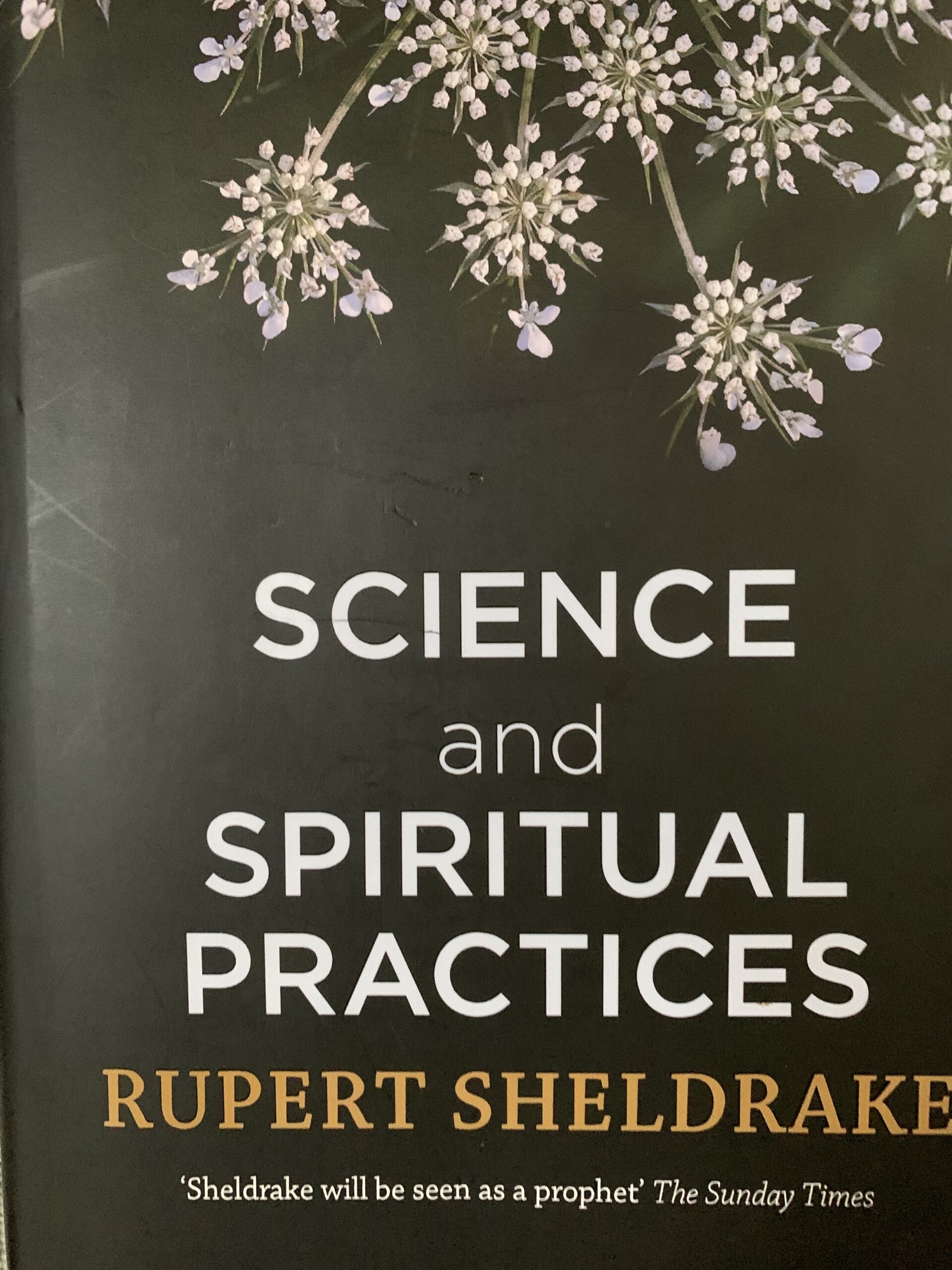
Pilgrimage and The Decline in Religious Observance
In many societies, religious devotion is on the decline, yet pilgrimage activity is on the up.
Secularism has become a more prominent choice, and for a while that seemed to work for people. Getting out from under the dogma and vagaries of institutionalised religion was liberating, a breath of fresh air. But then, many, it seems, began to feel the lack of spiritual nurturance that religion offers, and have started to look for it elsewhere.

The Trinity of Mind, Body and Spirit
The spirit and soul needs nurturing every bit as much as our minds and physical bodies. It might be said, that by ditching religion, we have “thrown the baby out with the bath water”.
So, it is interesting to observe how the hole that has appeared in how to nourish our spiritual welfare is now being met in different ways.
Shamanism
There is an increased interest, and engagement with, the ways and traditions of native cultures and how they connect to the divine; particularly in the form of shamanism. Shamanism offers a direct connection to God, Source, Higher Self, Nature (however you like to call it), in ways which traditional religions do not.
The British Pilgrimage Trust
Going on a “secular” pilgrimage is another way in which people are reconnecting with their spirituality.
The British Pilgrimage Trust is a charity revitalising pilgrimage activity in Great Britain. They are actively re-establishing old pilgrimage routes, have brought out a guide book detailing pilgrimage sites, and are setting up systems to support pilgrims on their way.
The BPT encourage people to come on pilgrimage bringing their own beliefs, whatever they might be. It is not religion that gives the art of pilgrimage its power to heal. Pilgrimage is an intentional activity, and intention does not need religion to work.
Pilgrimage on TV and in Films
And, as if to prove a point, that interest in pilgrimage is on the up, we are increasingly seeing pilgrimages represented in TV programmes.
Pilgrimage has also made an appearance on the big screen recently, with Jim Broadbent and Penelope Wilton starring in The Unlikely Pilgrimage of Harold Fry.
Initially, there was the odd film/documentary featuring that most well-known of pilgrimage routes, The Camino Way, which culminates at Spain’s most celebrated pilgrimage site of Santiago de Compostela.
Martin Sheen stars in one, called The Way: a film about an American doctor who comes to St. Jean Pied de Port in France to collect the remains of his recently deceased son who has been killed in a storm in the Pyrenees whilst walking The Camino Way. The doctor reluctantly sets off to walk The Camino himself, which ends up playing an important part in helping him heal from his grief.
The most recent TV pilgrimage programmes on the BBC have shadowed small groups of people of all religious affiliations, including pagan and agnostic, on 1) the route of St. Columba from Northern Ireland into Scotland; and 2) the new Portuguese route from the Spanish/Portuguese border travelling south to Fatima, the shrine to Our Lady mentioned above.
Mary Magdalene Pilgrimage and Synchronicity
This article is a pre-cursor to my Mary Magdalene Pilgrimage Diaries. It speaks to pilgrimage in general, and how they are journeys undertaken with a specific destination in mind and with a particular intention.
Two synchronistic events happened the week before I departed on this Pilgrimage:
The Unlikely Pilgrimage of Harold Fry
One was the release of the film The Unlikely Pilgrimage of Harold Fry, which I went to see two days before I left.

End-of-life Pilgrimage
In the other, I received a letter from the Retirement Home that I live opposite announcing that one of their residents was about to reach her 103rd birthday. The staff had asked Joan what she would like to do to mark this occasion and Joan had told them. She would like to be taken on a tour of her old stomping ground.
In the letter we, her neighbours, were advised that she would be setting off at 10am and it would be lovely if we could come to our doorsteps to cheer her off. 10am came and went! As I stood chatting in the street with my neighbours, we were given to comment “If you can’t be late (and Joan was really late!!) at 103, when can you be?!” Even that facilitated a camaraderie and sense of community as we hung around waiting.
Magic does seem to happen in the strangest of ways when a pilgrimage is afoot.
Joan was born in Kings Cross in 1920. She had grown up and lived in the Islington area for all her life. It was her birthday wish to go back to Kings Cross where she was born, and be taken up Primrose Hill to look at the view of London. How London has changed during her lifetime!
It made me think about pilgrimage in the context of end-of-life; a time to reflect on everything that has come to pass, maybe to make peace a little as in the case of Harold Fry.
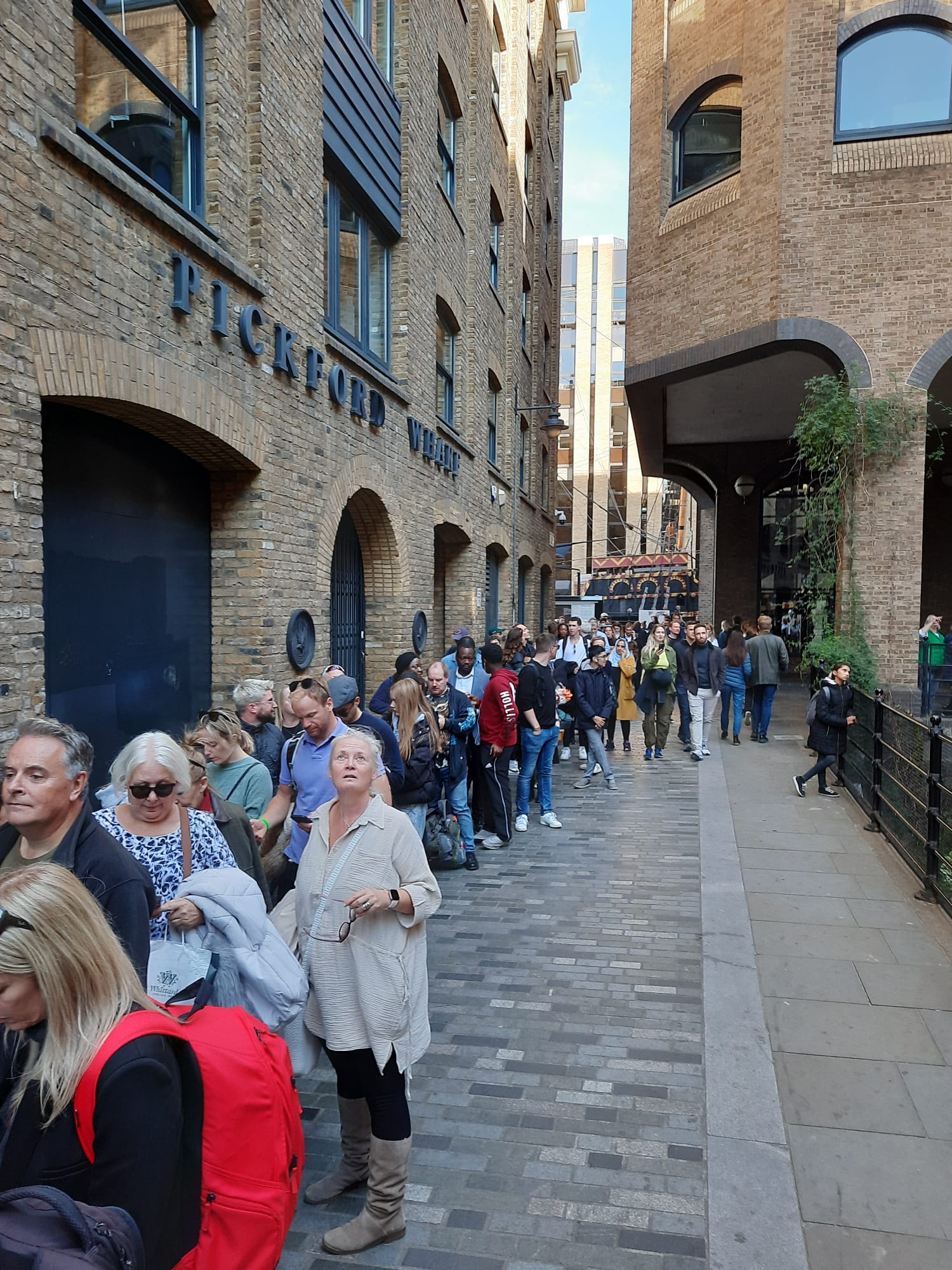
The Queen’s Queue (QQ)
QQ is the name of the Whatsapp group we set up after meeting in the queue to file past Queen Elizabeth’s coffin last September.
I had been watching others queueing to pay their respects on the TV throughout the week, and felt drawn to go. But, I couldn’t face that queue and the hours of shuffling along from Southwark Park in the East End of London to Westminster Hall.
On the last day of her lying in state I was faced with an ultimatum, “it’s now or never”. Spurring myself on, and bracing myself against the hours that lay ahead, I set off, and I’m so glad I did.
It too was a pilgrimage; a chance to pay my respects to an iconic lady, the likes of which we will never see again. She came from another era, and life is changing apace.
There were many people telling stories of how they had felt compelled to make the effort on this last day. In spite of transport disruptions, people had persevered. It was as though the universe got behind us all once the decision was made (the power of intention again). By hook or by crook people got there.
Queue Camaraderie
I am still in touch with two people I met in that queue. There is Markus from Cologne, who completely messed up his flight, and almost didn’t make it. But he was so determined to get to London from Germany that he got up super early, drove, caught a ferry, drove some more and parked up in time (three parking tickets later🫣😳) to find himself next to me and Heather, from Croydon, in the queue.
Again, extraordinary camaraderie ensued. Heather and I visited Markus in Cologne in December, so we could reunite around the German Christmas markets. We also visited Cologne Cathedral, Beethoven’s birthplace in Bonn, and the famous Aachen Cathedral. This too became a pilgrimage of sorts, especially as I have German ancestors and felt the connection to ancestral land.
Pilgrimage and Genealogy
Treading in the footsteps of one’s ancestors is also a form of pilgrimage with potentially great powers of healing. I can vouch for this myself, as I am a keen genealogist and have made several pilgrimages to ancestral places.
I have travelled to Tadcaster in Yorkshire and been shown around the town and the sites where my great great grandfather, Benjamin Braime, lived and ran his brewery empire before going bust!
I have visited Goldsmith’s Hall in London, and especially the library there, to research my silversmith and cutler ancestors. What an amazing building that is and I felt privileged to go inside.
I am currently planning pilgrimages to Dour in Belgium, to tread in the footsteps of my Huguenot ancestors; and also to the German Baltic coast, where I believe my Bülow family lineage stems from.
Closer to home, I have discovered eleven ancestors resting on my doorstep in Highgate Cemetery. From time to time I go there to pay my respects and contemplate what life must have been like for them in Victorian London.
Genealogy and pilgrimage has helped me understand my roots, which, in turn, has given me a stronger sense of who I am and where I have come from.
Lourdes, Spas and Mountains
There are many famous pilgrimage sights around the world, and not enough space to cover them here.
This post would not be complete, however, without mentioning Lourdes. People come from far and wide to experience this healing sanctuary located in the French Pyrenees.
The Pyrenees are a magical mountain range with healing spa towns and two mountains of particular note; Mont Canigou, the spiritual mountain of the Catalan people; and Mont Soularac, home of the Cathar Initiation caves (more about these to come in the Mary Magdalene Diaries).
So, What are the Benefits of Pilgrimage?
In short, there are many reasons that may prompt you to go on a pilgrimage. Often, they will offer healing opportunities that may not be found elsewhere.


